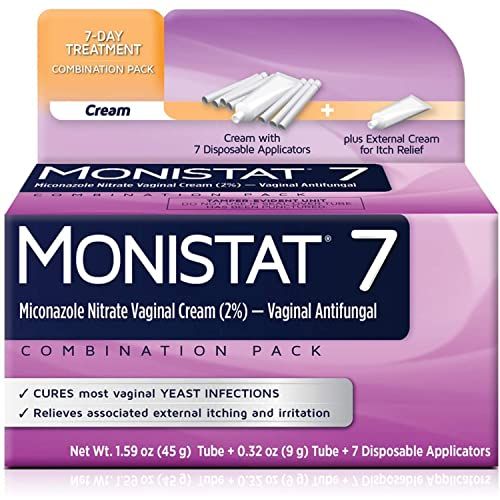UTI vs. Yeast Infections: How To Tell Which One You Have - Women's Health
There is nothing worse than experiencing burning and itching down there. However, these uncomfortable symptoms aren't always clear signs of UTI vs. yeast infection, two very common infections are likely the culprit. One in five women will experience a UTI in their lifetime, per the Cleveland Clinic, while up to three out of four women will have a yeast infection at some point in their lives, according to the Mayo Clinic. Deciding which one you're dealing with can be a challenge.
First, let's get the basics down. A UTI (a.k.a. urinary tract infection) is a bacterial infection, while a yeast infection is a fungal one. More specifically, "a UTI is an infection of the bladder, where urine is stored," says Melissa Wong, MD, a gynecologist at the Boston University Medical Center. "A yeast infection is an overgrowth of yeast. This can occur in many parts of the body, including the vagina and the skin outside of the vagina (also called the vulva)."
The main difference between the two is the location, says Jessica Shepherd, MD, an ob-gyn and women's health expert. A UTI affects the urethra and the bladder, whereas a yeast infection affects the vaginal region. However, "people are very unfamiliar with their genitalia, and where the origin of pain or irritation would start," Dr. Shepherd notes.
Identifying the location of the discomfort first can help you determine the condition based on symptoms. For example, if it hurts while you pee, not because something is touching your vaginal area, but because the infection is routed in the bladder, that means you likely have a UTI.
Knowing other common symptoms that these two types of infections can cause will further help you figure out exactly what is going on down there. Read on to learn more about how a UTI and yeast infection present themselves, plus the appropriate treatment and ways to prevent them in the first place.
Meet the experts: Jessica Shepherd, MD, is a gynecologist and the director of minimally invasive gynecology at the University of Illinois at Chicago. She is the founder of the online platform Her Viewpoint.
Melissa Wong, MD, is a gynecologist at the Boston University Medical Center and a senior fellow in complex family planning.
Rena Malik, MD, is a urologist and an associate professor of surgery and director of female pelvic medicine and reconstructive surgery at the University of Maryland School of Medicine.
Causes of a UTI vs. a Yeast Infection
A urinary tract infection is caused by "bacteria that may be in the area, and it spreads up towards the bladder," Dr. Shepherd says.
The most common bacteria that causes UTIs is E. coli, according to Rena Malik, MD, a urologist based in Baltimore and Columbia. UTIs are commonly caused by bacteria that's spread during intercourse, so make sure you use the bathroom after sex.
Concentrated urine can also cause the infection, according to Dr. Shepherd, so she recommends diluting your urine by drinking more water.
A yeast infection, on the other hand, is caused by an unbalance of yeast in the body, which can be a result of multiple factors. The overgrowth of a certain type of yeast called Candida can result in an infection that causes burning, itching, redness, and irregular discharge, per the Cleveland Clinic. But diet and personal hygiene can also play a role.
A change of pH in the vagina can cause the balanced yeast to shift. "If you eat a lot of sugary foods, that can shift the pH," says Dr. Shepherd. It can also occur from retained or excessive moisture in the area, meaning you need to get out of those sweaty gym clothes or a wet swimsuit ASAP!
Symptoms of a UTI vs. a Yeast Infection
An infection in your urinary tract can manifest in any of the following symptoms, according to the Mayo Clinic.
- A constant and powerful urge to pee
- A burning sensation when urinating
- Only releasing small amounts of urine when peeing
- Cloudy pee
- Red or pink-colored pee
- Blood in the urine
- Strong-smelling urine
- Pain in the pelvic area, specifically in the center of the pelvis and around the pubic bone
If these are sounding way too familiar and your pain is not subsiding after a couple of days, it may be time to see your doctor, Dr. Malik says.
The symptoms of a yeast infection are very similar to those of a UTI, but there are a few characteristics that differentiate it from other conditions. (Again, location of the discomfort is key!) Here are the symptoms you may be experiencing if you have a yeast infection, per the Mayo Clinic.
- Itching and irritation in the vaginal region
- A burning sensation, especially during sex or while using the bathroom
- Redness and swelling of the vulva
- Pain and soreness in the vagina
- A vaginal rash
- Thick, white, odor-free discharge that has been compared to cottage cheese
- Watery discharge
An over-the-counter medicine may be the simple solution you're looking for; however, if you don't feel better shortly after using this treatment, definitely check in with your gyno.
Treating a UTI vs. a Yeast Infection
Your best bet for getting rid of a UTI is taking an antibiotic prescribed by your doc. While some mild UTIs may be treated at home by drinking a lot of water, many people who experience pain (especially in the form of fevers, low back pain, and vomiting) should seek help from a doctor ASAP, Dr. Shepherd says.
Dr. Wong doesn't suggest trying any OTC meds on your own. "The best way to treat a UTI and prevent it from spreading to other parts of the body is with antibiotics prescribed by a healthcare provider," she says.
If you have the itchy, burning sensations of a yeast infection, you may want to try an over-the-counter antifungal creams, ointments, or suppositories. You should look for these active ingredients: miconazole, tioconazole, or clotrimazole.
However, if your symptoms don't improve within three days or you're consistently getting yeast infections, you should see a healthcare provider, per Dr. Malik.
Preventing a UTI vs. a Yeast Infection
Water, water, water: "Drinking 1.5 L more per day can actually decrease your risk of urinary tract infection by nearly 50 percent," says Dr. Malik.
It may sound simple, but Dr. Wong says you should "maintain good hygiene and wipe from front to back when going to the bathroom to minimize the spread of E. coli from the anus to the urethra."
Menopausal women often struggle with UTIs due to a decrease in their estrogen levels. So, "talking to your doctor about getting vaginal estrogen can really help prevent UTIs," says Dr. Malik.
Some probiotics may help in preventing future infections. Happy V, O Positiv, and other reputable brands have products to aid your microbiome from a gut or pH perspective and protect you from recurring infections.
Preventing the overgrowth of Candida can be as simple as practicing proper hygiene and avoiding certain products.
"Avoid using douches as this can contribute to the overgrowth of 'bad' bacteria and yeast. If you use any sex toys or other devices into the vagina (like a menstrual cup), make sure to wash them thoroughly with warm water and soap before and after each use," Dr. Wong says.
Dr. Malik agrees, adding that people should avoid "vaginal steaming, lubricants with glycerin, and try to avoid staying in sweaty or wet clothing. Wear breathable clothing and underwear, cotton is usually preferred," she says.




Comments
Post a Comment